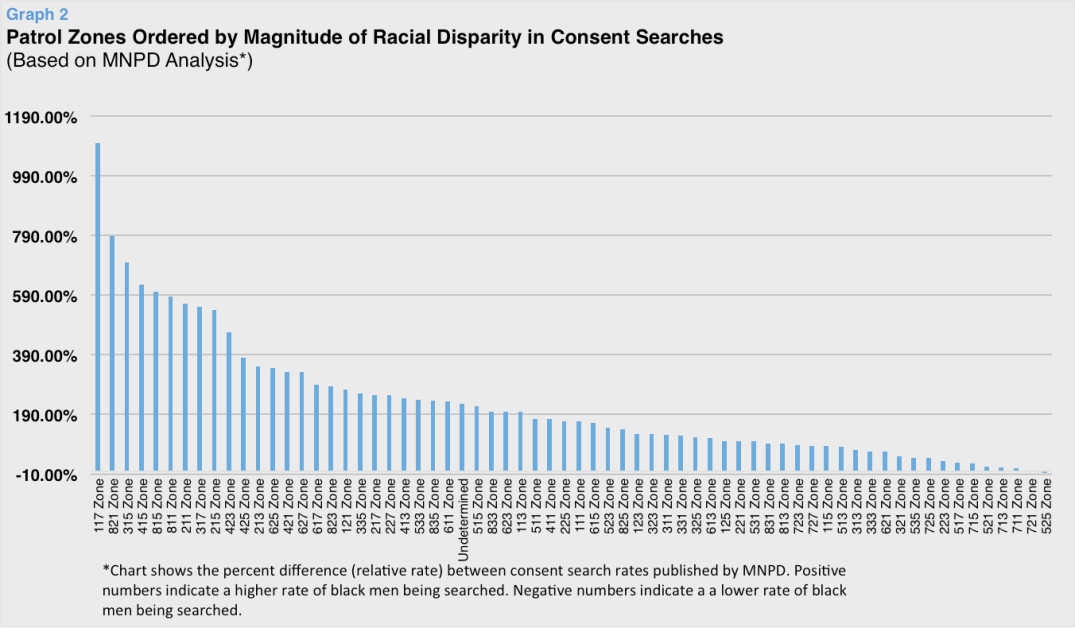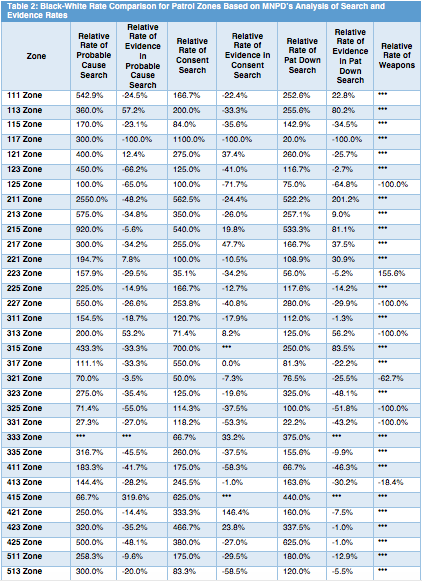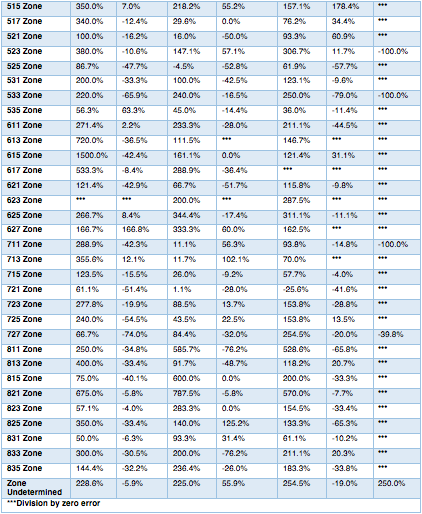By Gideon’s Army Driving While Black Team
December 6, 2016
On October 25, 2016, Gideon’s Army released Driving While Black: A Report on Racial Profiling in Metro Nashville Police Department Traffic Stops. Over the course of 213 pages, the report demonstrates in detail that the Metro Nashville Police Department (MNPD) subjects a disproportionate number of people of color to traffic stops and an even more disproportionate number of people of color to warrantless roadside searches.
Less than an hour after the release of the report, MNPD publicly responded that its officers do not engage in racial profiling, and that any racial disparities in MNPD’s traffic stops are merely the byproduct of its deployment of officers to “high crime areas.” MNPD also affirmed its commitment to the philosophy of having its officers “look beyond the stop” to find incriminating evidence during traffic stops, which MNPD believes to be an important crime-fighting tactic.
On October 30, 2016, five days later, Mayor Megan Barry publicly stated with regard to the Driving While Black report that statistics can be misleading, and that her office would be working with MNPD to ask the “next question” to determine “if” there is a problem (https://www.youtube.com/watch?v=psuu8GaOYro) (At 1:10:30 – 1:17:15).
Gideon’s Army has already asked the “next question” of the data and has found that MNPD’s justification for the race disparities is wholly lacking. While MNPD claims that racial disparities in traffic stop practices occur solely due to MNPD’s deployment of officers to “high crime areas,” this explanation utterly fails to explain why there are race disparities in MNPD’s roadside searches in virtually every MNPD patrol zone. These disparities were demonstrated by Appendix Two of the report, which included tables showing search disparities in virtually all of MNPD’s patrol zones representing areas with all levels of crime. Because these disparities exist in nearly every patrol zone, it is simply false to claim that they are the incidental byproduct of deploying more officers to “high crime areas.”
As part of their response to the Driving While Black report, MNPD has also said that vehicle stops are part of MNPD’s mission to create safety, especially in “high crime areas.” As MNPD spokesman Don Aaron recently stated: “Victims of crime seem to have been lost in this discussion. The MNPD makes no apologies for professionally and lawfully working in high crime areas to reduce victimization. Officers are to conduct their work fairly, impartially and without bias toward any segment of this community.”
Once again, MNPD’s response overlooks what our report so clearly illustrates, namely that hundreds of thousands of innocent drivers, a disproportionate number of whom are black and Hispanic, are being subjected to stops and searches that result in only a warning and yield no incriminating evidence (Findings 6-8). As such, these stops and searches—the vast majority of all stops and searches, hundreds of thousands every year—play no role in “reducing victimization,” as MNPD claims. Indeed, not only do these stops and searches have nothing to do with victims of crime, our interviews show that black drivers often experience such stops and searches as forms of victimization, not as protection from victimization. Does MNPD seriously “make no apologies” for conducting hundreds of thousands of racially disproportionate stops and searches that bear no relation to criminal activity?
In response to Ordinance BL2016-483 proposed by Council Members Mendes and Gilmore, MNPD released figures, probable cause searches, consent searches, and pat down searches as well as evidence found in each type of search. The analysis nearly complies with the proposed ordinance, except for the data presented on consent searches. While the ordinance calls for data on “warrantless consent searches without probable cause,” MNPD included searches where consent was given and the officer asserted probable cause. This overlap double counts probable cause searches, and has the effect of roughly doubling the apparent success rate of consent searches.
Overall, the analysis from MNPD supports the claims made in the Driving While Black report even though it is challenging to comprehend without substantial interpretation and additional calculations. To show disparities, a comparison must be made between groups that shows the size of the difference.* Based on MNPD’s figures, across Davidson County, black non-Hispanic men are searched based on consent at a rate 200% higher than white non-Hispanic men. In these searches, the rate of officers finding evidence is 14% lower for black men than white men. Black non-Hispanic men are searched based on probable cause at a rate 286% higher than white non-Hispanic men. In probable cause searches, the rate of finding evidence is 21% lower for black men than white men. These disparities have some variability across precinct and patrol zone but are consistent in their implications: black men are disproportionately searched and officers are less likely to find evidence on black men compared to white men.
To assist with interpreting the 40 pages of tables published by MNPD we provide (below) two tables and two graphs showing relative rates of searches and finding evidence for black non-Hispanic men compared to white non-Hispanic men. Table 1 and Graph 1 present comparisons at the county and precinct levels while Table 2 shows comparisons for each patrol zone. Graph 2 ranks the racial disparity in consent searches by zone. We draw solely from the analysis published by MNPD for these figures even though they include some probable cause searches conflated with consent searches. Positive numbers (above the horizontal axis) show cases where black non-Hispanic men have higher rates of being searched while negative numbers (below the horizontal axis) show lower rates. For instance, in zone 821, which is located in the Midtown Hills Precinct, 7.1% of black men who are stopped are subjected to a consent search compared to 0.8% of white men who are stopped. The rate for black men is 787.5% greater than the rate for white men while officers are also 5.8% less likely to find evidence on black men than white men.
In each category of search, black men are vastly more likely to be searched. Meanwhile, in the majority of cases officers are less likely to find evidence on black men. The exception to this pattern is with weapons found during pat downs. However, according to the 252 database of traffic stops, 75% of pat down searches in which weapons were found also had probable cause to justify the search, suggesting that it would be helpful if the ordinance were amended to require MNPD to present data on the volume and success rate of pat downs without probable cause. Furthermore, it should be noted that the database does not specify the type of weapon found. Finally, since only 97 weapons were found in the county as a whole during pat down searches on black and white non-Hispanic men, the sample size is small enough that rates for weapons should be interpreted with caution.
The story told by these data is that racial disparities persist in every geographic unit, which means the justification of higher officer deployments to “high crime areas” is unfounded. With MNPD’s most recent release of search figures confirming the results of the Driving While Black report, along with the reasons outlined at length in our report, MNPD’s enormous, racially disparate “stop and search” regime cannot be justified on the basis of crime reduction because the numbers simply do not bear out such a claim. We condemn these racially disparate stop and search practices, as well as MNPD’s disingenuous justifications for them, and call upon the Mayor’s Office to recognize and rectify this problem immediately.
*To compare groups, we use the relative rate calculated as (x – y)/y where x is the rate for black non-Hispanic men and y is the rate for white non-Hispanic men.




